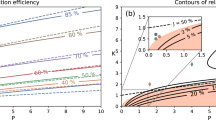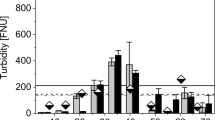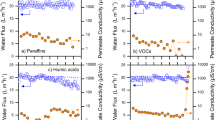Abstract
MEMBRANE filtration is widely used as a standard procedure in treating water samples before they are subjected to chemical analysis. Acceptance of this procedure involves the implicit assumption that filtration separates the raw water into well defined fractions; this belief is, however, only partly correct. In fact, membrane filtration separates the solid phase (particulate matter: detritus, plankton) from the liquid phase (water with the solutes), with distribution of colloidal matter between these major fractions. An undefined part of the colloids is retained with the solids on the filters, chiefly as a result of electrostatic forces; the remaining part of the colloids accompanies the liquid phase1. Colloid retention by the filter is evidenced by the colouring of the filters even when no plankton is present, and by the observation that filtration of a specified volume of water is often difficult to perform, even in the case of samples containing hardly any planktonic organisms or detritus2.
This is a preview of subscription content, access via your institution
Access options
Subscribe to this journal
Receive 51 print issues and online access
$199.00 per year
only $3.90 per issue
Buy this article
- Purchase on Springer Link
- Instant access to full article PDF
Prices may be subject to local taxes which are calculated during checkout
Similar content being viewed by others
References
Olsen, S., Proc. I.B.P. Tech. Meeting (in the press).
Olsen, S., and Olson, P. R., in Verh. Int. Ver. Limnol., 16, 58 (1966).
Author information
Authors and Affiliations
Rights and permissions
About this article
Cite this article
OLSON, P., OLSEN, S. Membrane Filtration of Fresh Water. Nature 214, 1217–1218 (1967). https://doi.org/10.1038/2141217a0
Received:
Issue Date:
DOI: https://doi.org/10.1038/2141217a0
Comments
By submitting a comment you agree to abide by our Terms and Community Guidelines. If you find something abusive or that does not comply with our terms or guidelines please flag it as inappropriate.



